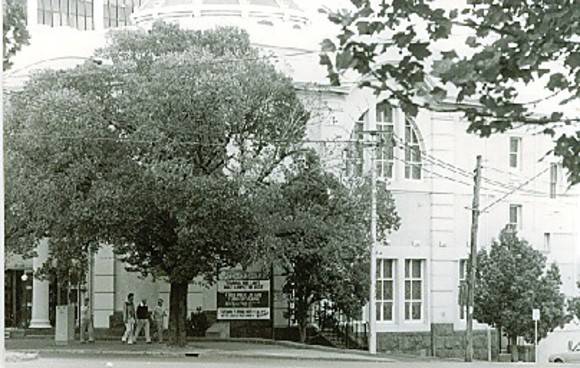| Back to search results » | Back to search page » |
|
First Church Of Christ Scientists & Organ
Location336 St Kilda Road,, SOUTH MELBOURNE VIC 3205 - Property No B4871
File NumberB4871LevelLocal |
|
Statement of Significance
Constructed in 1920, the First Church of Christ, Scientist by Bates Peebles and Smart exhibits the influence of the 'Neo-Grec' movement in England at the time. This was combined with the classical amphitheatre plan form adapted by the Church of Christ, Scientist in America. The builders were Hansen and Yunken.
The classical formality of the plan has been unobtrusivelly adapted to the irregularity of the site. The principal entrance is marked by a pedimental portico of four doric columns flanked by corner pavilions with heavily ruled course lines in the rendered brickwork. The foyer beyond the portico gives access down a few steps to the Sunday School or up stairs (or hydraulic lift) to the Church above. The lift itself is original and important as a surviving example of lift technology and craftsmanship. Both the north and south elevations are centred on a double storey arch form containing a semi-circular window to the Church and three windows to the Sunday School beneath. The central mass of the building is surmounted by a low drum of oval windows and a shallow dome.
In 1933 th building was extended to the south along Dorcas Street in similar style to provide administrative offices and in 1948 the original flat roofed areas of the original church building were covered by pitched roofs concealed behind the original parapets. In 1962 the exterior was painted and subsequently there have been minor alterations to the interior and repainting of the exterior. The majority of the original detailing is, however, still intact.
Classified: 23/07/1981
Organ Statement of Significance: A three manual organ of 33 stops built in 1927 by the noted London firm of Henry Willis & Sons and remaining largely unaltered from the original. Sited behind two bronze grilles in masonry chambers, the instrument is of romantic-symphonic design and incorporated outstanding examples of flue and reed voicing. It is the only entirely new example of the firm's 20th century work in the country and an instrument of great tonal distinction, retaining the whole of its pipework, action, windchests and elegant detached console with ivory fittings.
Classified: 14/12/1989
Organ classified National.
Group
Religion
Category
Church




